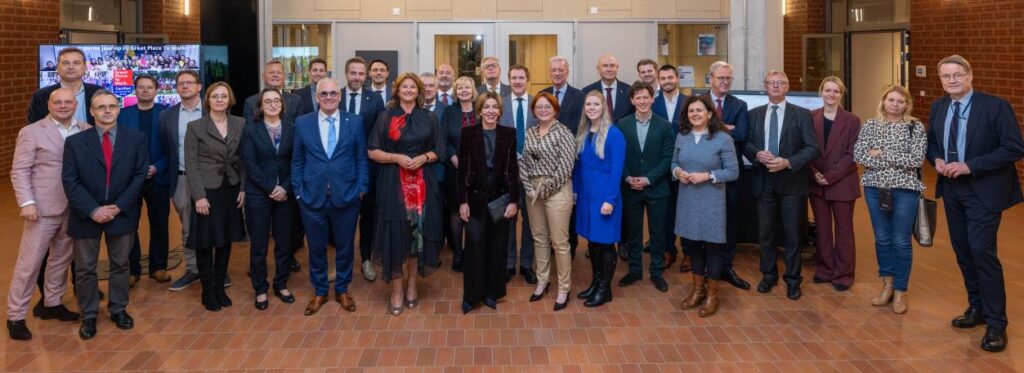Without border regions no Europe, without Interreg no European cohesion
ITEM presented the usefulness of instruments, territorial and cross-border impact assessments and cohesion policy for border regions in the 10th annual conference, held at the Provinciehuis van Oost-Vlaanderen in Ghent. Development of border regions is essential to achieve European cohesion and align regulations and policies accordingly.
Indeed, border regions play a role in interconnecting member states, thus contributing to strengthening industry and competitiveness, allowing Europe to remain a full player in geopolitical realities. To avoid lengthy decision-making and achieve concrete results, government layers, knowledge institutions and industry should take joint responsibility and take action, with room for both short- and long-term solutions. Conclusion: do not turn your back on Europe’s internal borders, but instead use the strength of border regions by developing joint ‘narratives’ to contribute to strengthening Europe’s competitiveness.
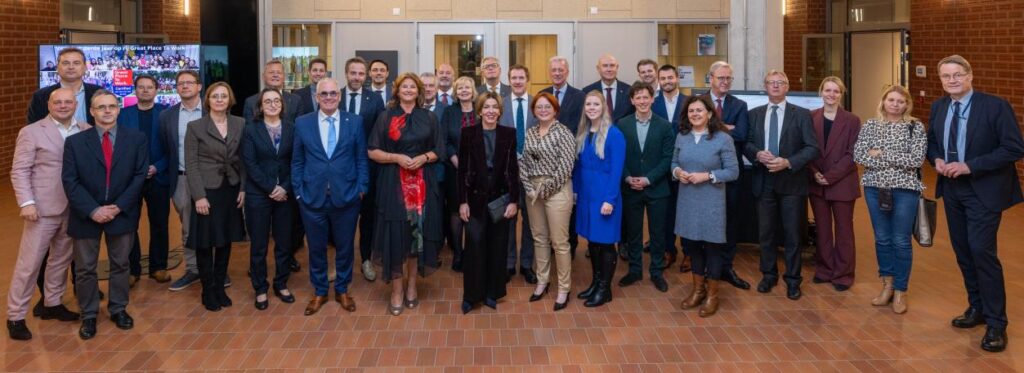
Concrete cooperation through continuous dialogue and multilevel governance
Prof. Dr Anouk Bollen-Vandenboorn, summed up the essence of the conference:
“Don’t just talk about how you organise it, do it; keep the continuous dialogue with each other on topical issues such as circularity or climate to move forward. This can only be done with substantive arguments and nourishment, take action on both sides of the border otherwise it will take too long.”
This requires vision, action and an integrated approach where parties recognise and assume their responsibilities. This insight is also propagated by chairman HNP, CdK Arthur van Dijk. Effective lobbying in relation to the new cohesion policy requires efforts not only in Brussels but also with national governments. Coalitions of the willing are essential here. Consider examples such as information from the Schakelpunt Grensbelemmeringen Vlaanderen-Nederland and the Benelux Union. Even if, for example, European Interreg funds come to an end, the need for the Schakelpunt Grensbelemmeringen Vlaanderen-Nederland will remain. Experimentation, information exchange and cross-border cooperation remain necessary. Governor of East Flanders Carina van Cauter, stressed the importance of listening to regional signals and translating them into concrete solutions: “We listen to what resonates with cities, municipalities and provincial governments, pick up problems and deal with them. We analyse them well and work out solution directions, supported by universities to then put it on the board tables”.
This approach, as also the Schakelpunt Grensbelemmeringen Vlaanderen-Nederland handles, promotes the realisation of policies that meet the needs of border regions. Local actors in border areas have been active, creative and bottom-up driven for many years. They organise cross-border cooperation and remain crucial. Also on topics such as climate, energy and circularity, with shared responsibilities through structures and dialogue. This calls for multilevel governance: sharing power through structures, platforms and ongoing dialogue. Smart policies link border areas to international value chains, and that brings success and added value. So give border areas a place in strategic debates. Use data and success stories to strengthen border areas as engines of cohesion and refute gut feelings of other kinds.
Cohesion policy after 2027: an innovative long-term cross-border agenda!
Prof. Dr Birte Wassenberg, professor of modern history at the University of Strasbourg placed the need for cross-border cooperation in a historical perspective. She argued that cooperation has been an essential building block for centuries of border regions and will remain so into the future. Border regions, accounting for 40 per cent of EU territory, act as “living labs” where innovative solutions are tested and implemented, according to Wassenberg. Local and regional actors remain active and initiate movement in border areas. They provide strong bottom-up pressure with their own structures, keeping the foundation. It is precisely the preservation of this foundation that should receive attention in European cohesion policy after 2027. Erwin Hoogland, deputy of the province of Overijssel, stated that daring to choose, focus and dare to invest in collaborations, also between economically strong regions, is crucial. He stressed that European cohesion policy should, on the one hand, support lagging regions without losing sight of cooperation between stronger regions. On the other hand, it should focus on innovation across borders for sustainable digital, social and green transitions. However, innovation also involves risks, but these can be seen as learning moments: “Failure is a success in progress,” says Hoogland. This attitude calls for a shift in public policy, in which risk appetite is central. The shared story (narrative) is therefore important with attention to the following preconditions for success:
1. Willingness & commitment
2. Capacity & funding
3. Legal instruments
4. Governance & coordination
5. Geographical scope (decentralism)
6. Capacity expertise & network
A strategic debate is needed where regions jointly set goals and can also negotiate themselves. For such an effective cohesion policy, funding, multi-level governance and better regulation with evaluation tools are essential. Place-based solutions and their evaluations should be central, said Thomas Wobben of the Committee of the Regions. The challenge then is to link this place-based approach of the Committee of the Regions with the sector-based approach of the European Commission. Integrating border regions into steering international value chains can strengthen Europe’s competitiveness. Showcase successes and added value, using existing structures and platforms to have continuous dialogue with each other and not forgetting the involvement of citizens.
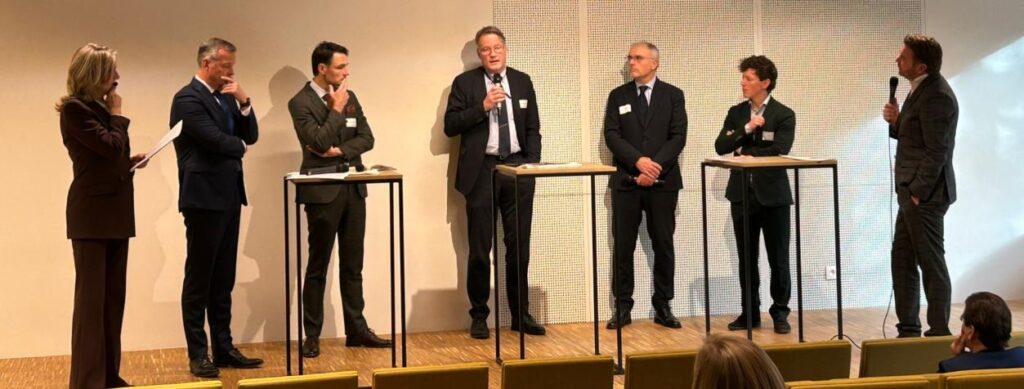
If things go well in the border regions then things will also go well in Europe and in the member states
ITEM researcher Pim Mertens underlined the crucial role of border regions in the future of Europe’s internal market and competitiveness. He pointed to the messages from the Letta, Draghi and High-Level Group reports in relation to Regional Policy. Border barriers such as legal, administrative and infrastructural obstacles can inhibit integration and growth. These barriers restrict mobility, cooperation and economic development, especially in border areas, and cost Europe billions every year. Only 2.5% of the EU cohesion policy budget is spent on cross-border cooperation, such as through Interreg programmes. So this is remarkable.
Letta advocates modernising the single market with a fifth freedom: mobility of research, innovation and data. He warns of negative effects such as brain drain and increased regional inequalities due to twin transitions (digitalisation and sustainability). Cohesion policy should therefore transform into a more flexible and place-based policy with more resources and focus on cross-border projects.
Draghi calls for a European industrial policy that encourages innovation, sustainability and independence. A strengthened single market is essential here, as is addressing border barriers, which limit economic value and the labour market. Border regions can then serve as “living labs” for integration, where successful initiatives contribute to European stability and competitiveness.
Horizontal border integration will strengthen vertical European cohesion, with the premise that strong border regions lead to a stronger Europe. The future calls for cross-border policies, fewer barriers and more cooperation. Border regions are crucial not only for regional development, but also for Europe’s internal market and global competitiveness.
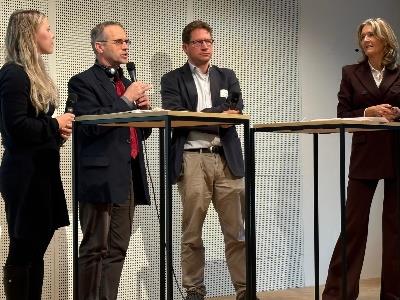
From Green Deal to Industrial Deal: triple helix collaboration in focus
The conference highlighted the shift from the Green Deal to an Industrial Deal, presenting cross-border cooperation between member states as a prerequisite for success. It underlined that sustainable economic development, infrastructure and livability require a consistent investment climate, fair tariffs and a level playing field within Europe. For this transition, functioning European transport corridors are essential. The question does remain how European direction can promote this needed cross-border cooperation and what is the impact of European industrial policy on border regions. According to Carl de Maré (Programme Director Smart Delta Resource (SDR)), one challenge lies in maintaining a level playing field within the industry: “Europe’s industry chooses the path of sustainability, but we don’t consistently apply it at Europe’s borders. We accept products that do not meet our criteria.” This highlights the need and relevance of triple helix cooperation to make European industries competitive, sustainable and counterbalance geopolitical challenges.
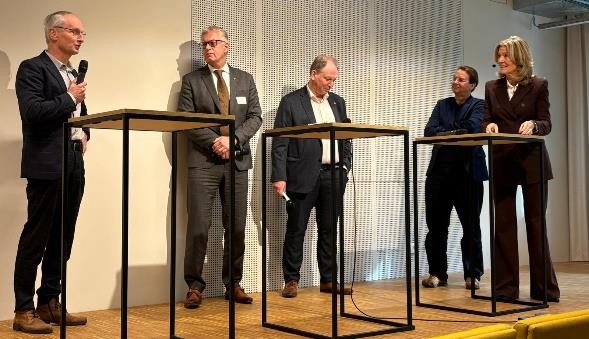
Take action! Deploy innovation as an engine of progress.
Innovation is indispensable for strengthening the European economy and achieving climate goals. Mark Andries of the Flemish Agency for Innovation and Entrepreneurship (VLAIO) called for major investments that would enable a leap towards climate neutrality. According to Andries, Europe has strong assets, but it is essential to keep investing and innovating. Hans Meijer, General Counsel & Director Strategic Projects at Deep Branch added: “Do everything in your power to make processes smarter, more efficient and effective. We are losing jobs to America and China. Time is up.” This urgency highlights the need for action at both regional and European level. Europe needs to commit to innovation, infrastructure and investment; this should be taken into account in cohesion policy with evidence and respecting the strength of border regions in order to stand out geopolitically and let its own European competitiveness be its strength.
Conclusion
The ITEM Annual Conference 2024 highlighted the crucial role of border regions as drivers of innovation and cooperation in Europe. Without border regions no Europe, without Interreg no border regions. It is up to layers of government, knowledge institutions and industry to jointly set a forward-looking course. This requires a balance between short-term and long-term actions, with a clear focus on innovation, sustainability and inclusive growth. As several speakers stressed, time is of the essence. Only by acting decisively now can Europe maintain its leading role and achieve a resilient future.
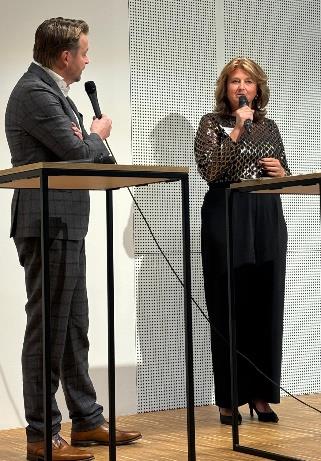
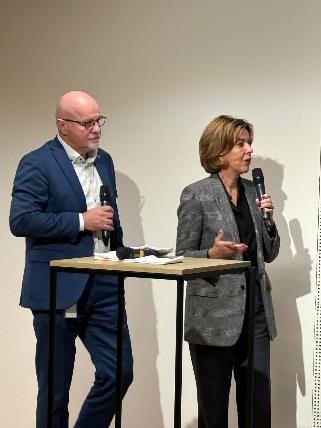

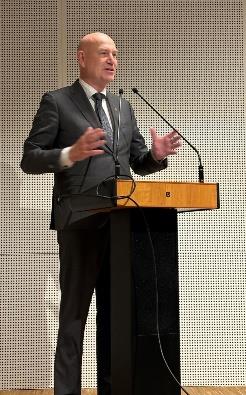
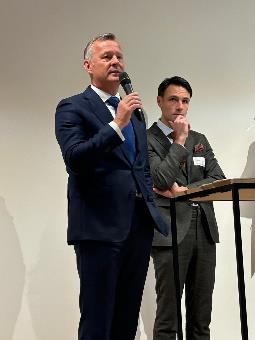
New phase for ITEM
After ten years, ITEM is on the eve of a new phase, linked to Maastricht University’ s Europe strategy . According to Prof. Bollen-Vandenboorn, ITEM continues to focus on cross-border analysis and border impact methodologies, which contribute to addressing cross-border societal regional challenges. The conference confirmed that cross-border cooperation, substantive dialogue and risk-taking are essential to meet the challenges of our time face the challenges of our time and jointly build a sustainable, inclusive future for Europe with an eye on the strength and potential of internal borders.
Cross-Border Impact Assessment
As usual, the annual Cross-Border Impact Assessment was presented during the conference, consisting of six dossiers with cross-border themes, ranging from the Benelux Police Treaty to the Netherlands-Belgium Tax Treaty.
The Cross-Border Impact Assessment is intended to be a valuable tool for policymakers, administrators and politicians at regional, national and European level to be able to visualise the effects on the border region and cross-border cooperation.
- Read summaries and full dossiers
- Also read the Collector’s ITEM, 10 years Cross-Border Impact Assessments

